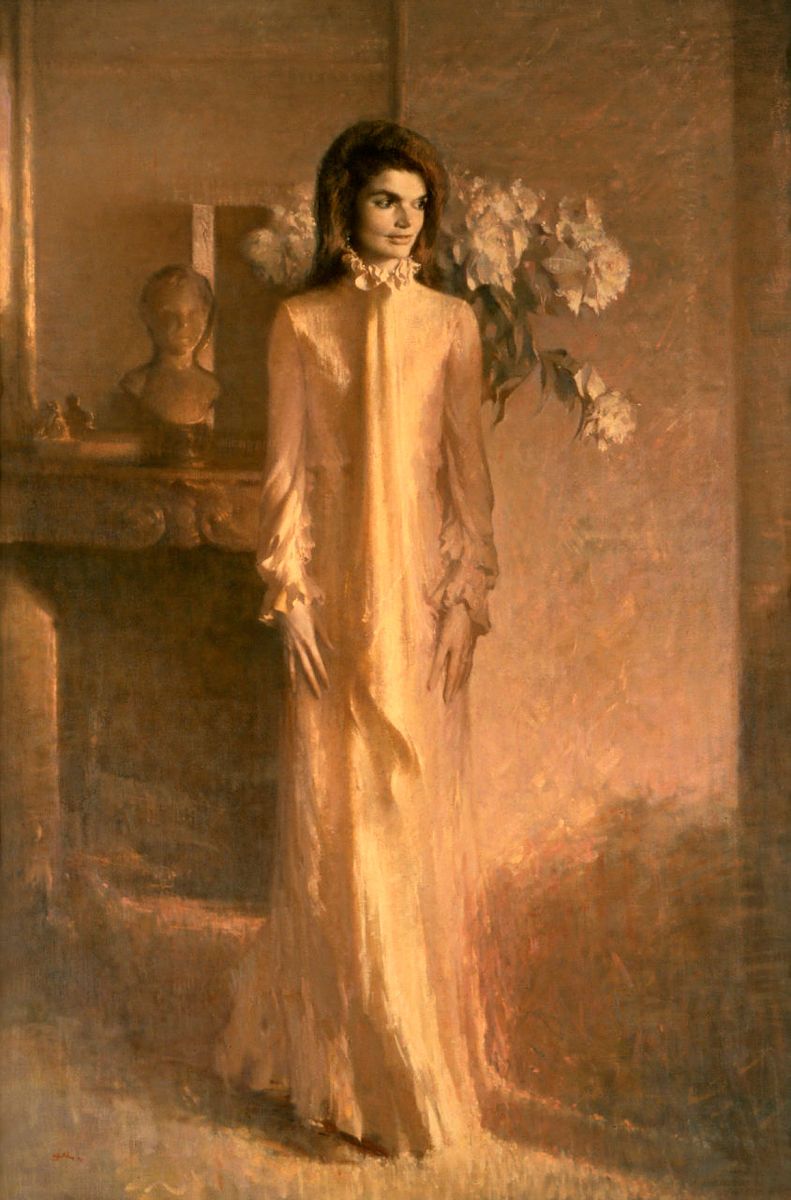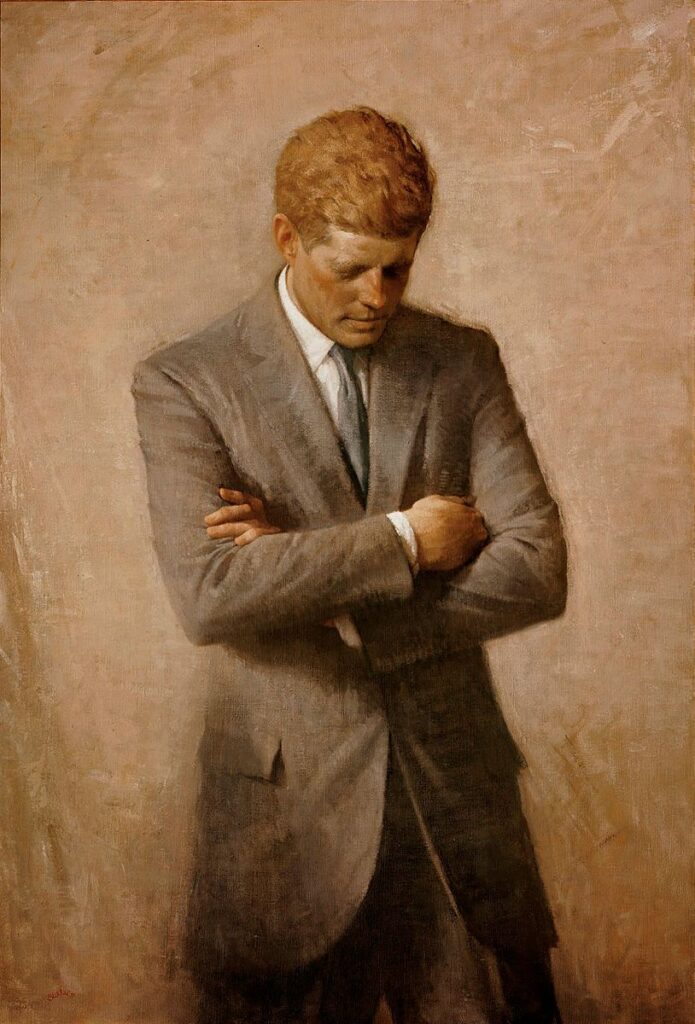
Aaron Shikler (1922–2015)
Study for the White House Portrait of Jacqueline Kennedy, 1968
Oil on canvas
McMullen Museum of Art, Boston College, Carolyn A. and Peter S. Lynch Collection, 2022.56
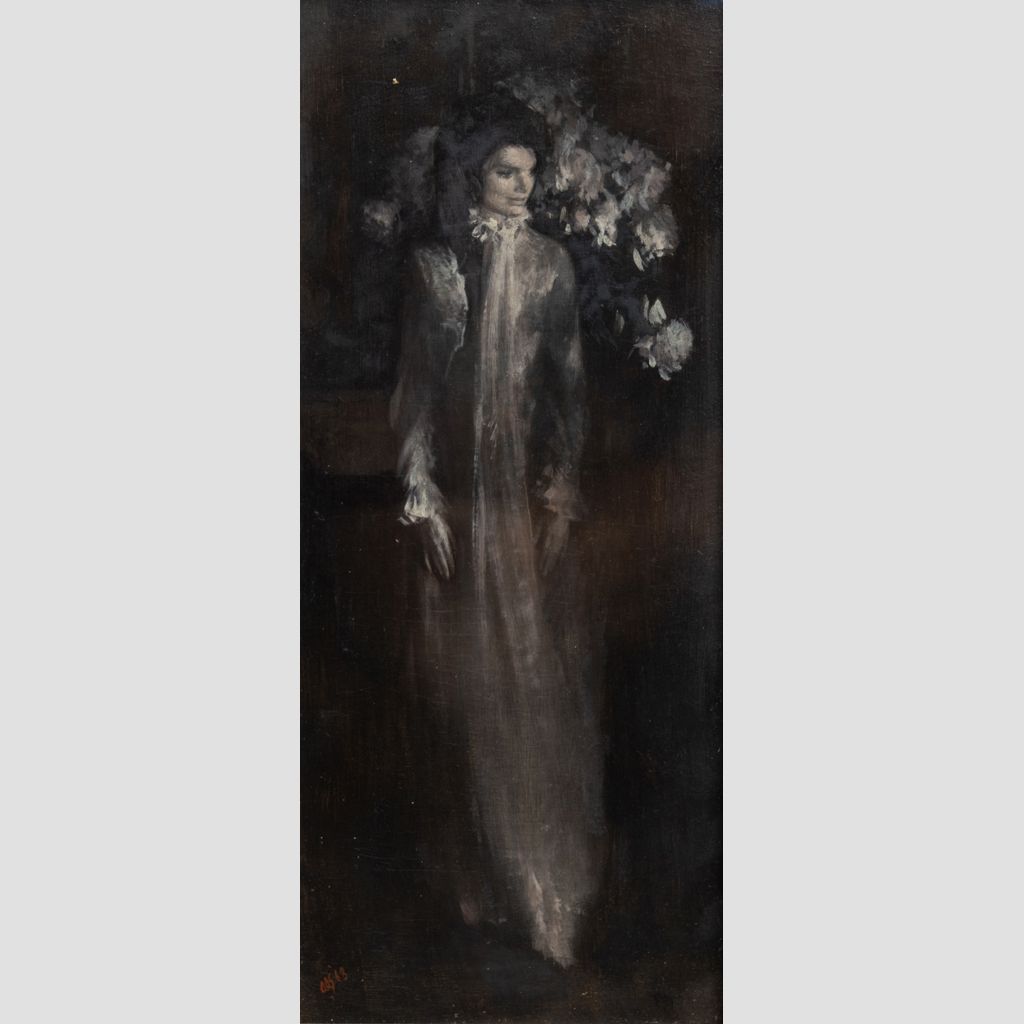
Nancy Netzer
Inaugural Robert L. and Judith T. Winston Director, McMullen Museum and Professor, Art History

Trained at the Tyler School of Art in Philadelphia and then in New York under the renowned German-born abstract painter Hans Hoffman (1880–1966), Aaron Shikler built a career painting portraits, in what he saw as a European representational style. Among his sitters were many well-known politicians and social elites, including Charles de Gaulle, Ronald and Nancy Reagan, and Gloria Vanderbilt. He also painted a lifesize portrait in grisaille of Jacqueline Kennedy for which this is a late preliminary oil sketch. Unveiled in 1971, the final painting (see image, below) hangs in the Vermeil Room of the White House (see image) not far from Shikler’s posthumous portrait of her husband, John F. Kennedy (see image, below) in the Cross Hall. Jacqueline Kennedy had previously commissioned Shikler to complete pastel portraits of her children Caroline and John and of the three of them, for which several studies also exist.
In an earlier sketch for the White House portrait (see image), which Kennedy is said to have vetoed as too “girlish and intense,” Shikler shows her in a frontal pose wearing the flared skirt and blouse with a bow in which she posed for him in her New York apartment. By the stage in which he made the McMullen’s preliminary study, Shikler extended the blouse to the floor and turned her head to give her a slimmer profile and to make her appear more elegant and less “angry” after the recent assassination of her brother-in-law Robert F. Kennedy. Shikler commented that he attempted to capture “the haunted look in her eyes” and the tension in her hands that belied her calm restraint.

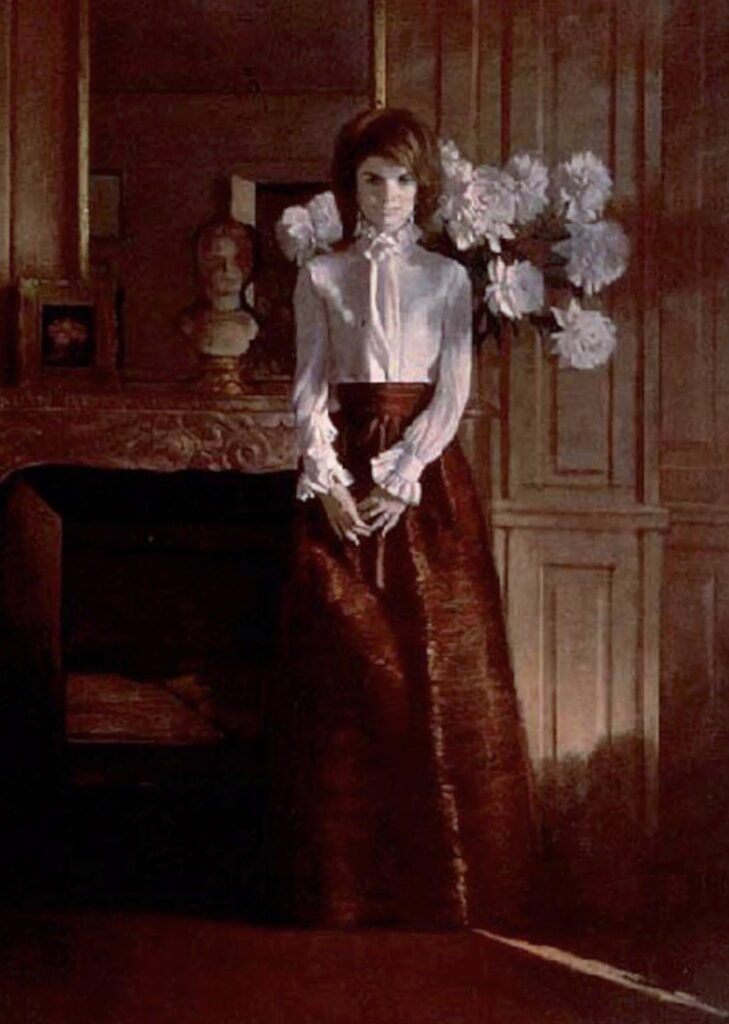
Kay L. Schlozman
J. Joseph Moakley Professor, Political Science
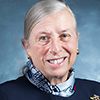
Standing in front of the fireplace in her Fifth Avenue apartment, Jacqueline Bouvier Kennedy wears an ethereal, diaphanous, long gown in this study for the official portrait (see image) that now hangs in the White House’s Vermeil Room (see photo, above). (The dress was supposedly fictional. When she posed, she wore a skirt with the blouse that is pictured.) Whether—as it has alternately been described—her expression is sad, mysterious, pensive, or intense, she is unambiguously beautiful.
Portraits of first ladies vary in terms of how the subject is posed, how she is dressed, and whether, as this one does, the painting reveals anything about her inner life. No other first lady emerges as simultaneously so feminine and so psychologically complicated as Kennedy.
It is interesting to compare the portrait of Jacqueline Kennedy with the one that Shikler did posthumously of her husband (see image). John Kennedy is pictured, in isolation without props or background, arms folded and head bowed, deeply contemplative, bearing the weight of his responsibilities as leader of the Free World.
It is perhaps even more interesting to compare the first lady portraits, taken together, with those of the presidents. Whether they are smiling or reflective, whether their attire is formal and opulent (Caroline Lavinia Scott Harrison), elegant (Nancy Reagan in a portrait also by Shikler), or simple (Rosalyn Carter), whether they are unadorned or sport jewelry (Melania Trump’s ring is notable), whether petting a dog (Grace Goodhue Coolidge) or holding a purse (a sixty-something Mamie Doud Eisenhower decked out for the prom), anyone not in the know would be hard pressed to identify what this group of women has in common is their position as first ladies. Eleanor Roosevelt—pencil in hand, an open book in front of her—is the only one captured actually doing something.
In contrast, the presidential portraits convey seriousness of purpose and project power. Like the JFK portrait, those of a care-worn Abraham Lincoln and a deeply thoughtful Franklin Roosevelt especially communicate the burdens assumed by a president in a time of crisis. Like Zachary Taylor after him, George Washington grasps his sword. John Quincy Adams has his forefinger in a book, presumably keeping his place as he is interrupted in the act of reading. Herbert Hoover and George H. W. Bush are each pictured in front of a globe. George W. Bush’s hand rests on a chair upholstered with the presidential seal. Unlike any of the first ladies, numerous presidents are pictured with papers, sometimes in their hands.
When we finally elect a female president, how will she be depicted in her official portrait?
